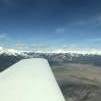Stuck for a few hours...need some advice!
-
Members Online
- exM20K
- chrisburdzy98
- AgFlyer
- SKI
- richardbrochu27
- takair
- 201er
- raymondscott0321
- ta2too
- buddy
- Danb
- N201MKTurbo
- PeterRus
- johnnyr172
- Matt103187
- ElkoRandy20J
- 00-Negative
- gabez
- Ivan
- slowflyin
- jcovington
- K_AWA
- Daily
- TCC
- Van Lanier
- jennifashby
- eman1200
- Mjschwartz
- BrianWilkins
- 67 m20F chump
- Oscar Avalle
- 201Steve
- Rsmithref
- Sabremech


Recommended Posts
Join the conversation
You can post now and register later. If you have an account, sign in now to post with your account.